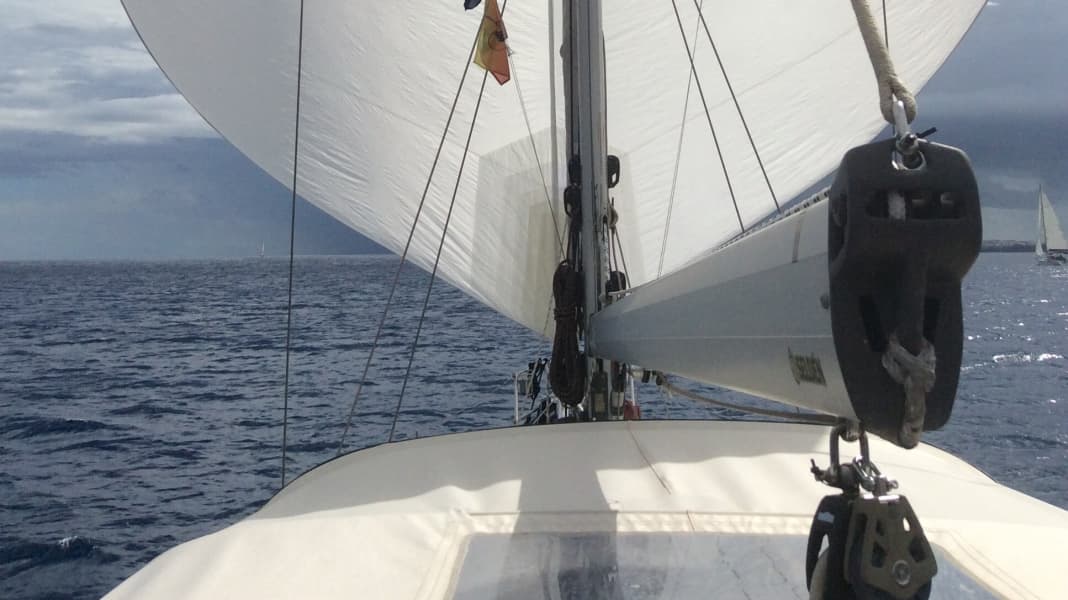
The Blue Water Runner consists, so to speak, of two belly-shaped, lightweight genoas that are sewn together at the front on a cloth tube. This is pushed once over an anti-torsion line, which is connected to a furling system. The sail is connected at the top and bottom to the thimbles of the line and furled, then the system is attached in front of the forestay and set on the gennaker halyard. With two sheets over spinnaker poles back and to starboard of the mast, the double sail is unfurled, which stands in front of the wind like a trade wind sail. Not as a butterfly, but only rolled out on one bow, the double sail then serves as a reacher or code zero. So you have three sails in one, as Elvström emphasises, which would save money and space on board.
Another advantage is that the sail can be reefed using the furling system and is easy to remove. Theoretically, it can also be left furled when the boat is travelling under normal conditions, but the sausage disturbs the current in the conventional headsail, which will also be noticeable in the form of poor or non-standing wind threads. The sail is made of a lightweight polyester fabric that is cut horizontally.
The Blue Water Runner has already been trialled on a Hallberg-Rassy 40 at the Atlantic Rally for Cruisers, where it proved its worth particularly on deep courses. The crew speaks of wind angles of between 135 and 180 degrees and good reefability in squalls. Elvström man Sören Hansen: "This is actually intended for longer cruises, but the design will also become established for coastal sailing. The sail should also work in smooth water without spars." Another advantage: in stronger winds, the halyard can be furled slightly after the sails have been set and unfurled, thus minimising the crease between the two cloths; the sail then stands like a spinnaker.
The Blue Water Runner from Elvström costs around 4300 euros for a 40-foot yacht including anti-torsion cable. Added to this is the furling system for 840 euros (manufacturer Bartels ).
The Englishman Ian Simpson had a similar idea, but realised with an upwind headsail and set in the usual furling system, with a so-called Simbo rig, see also YACHT 10/2015


Dry test at Elvström
